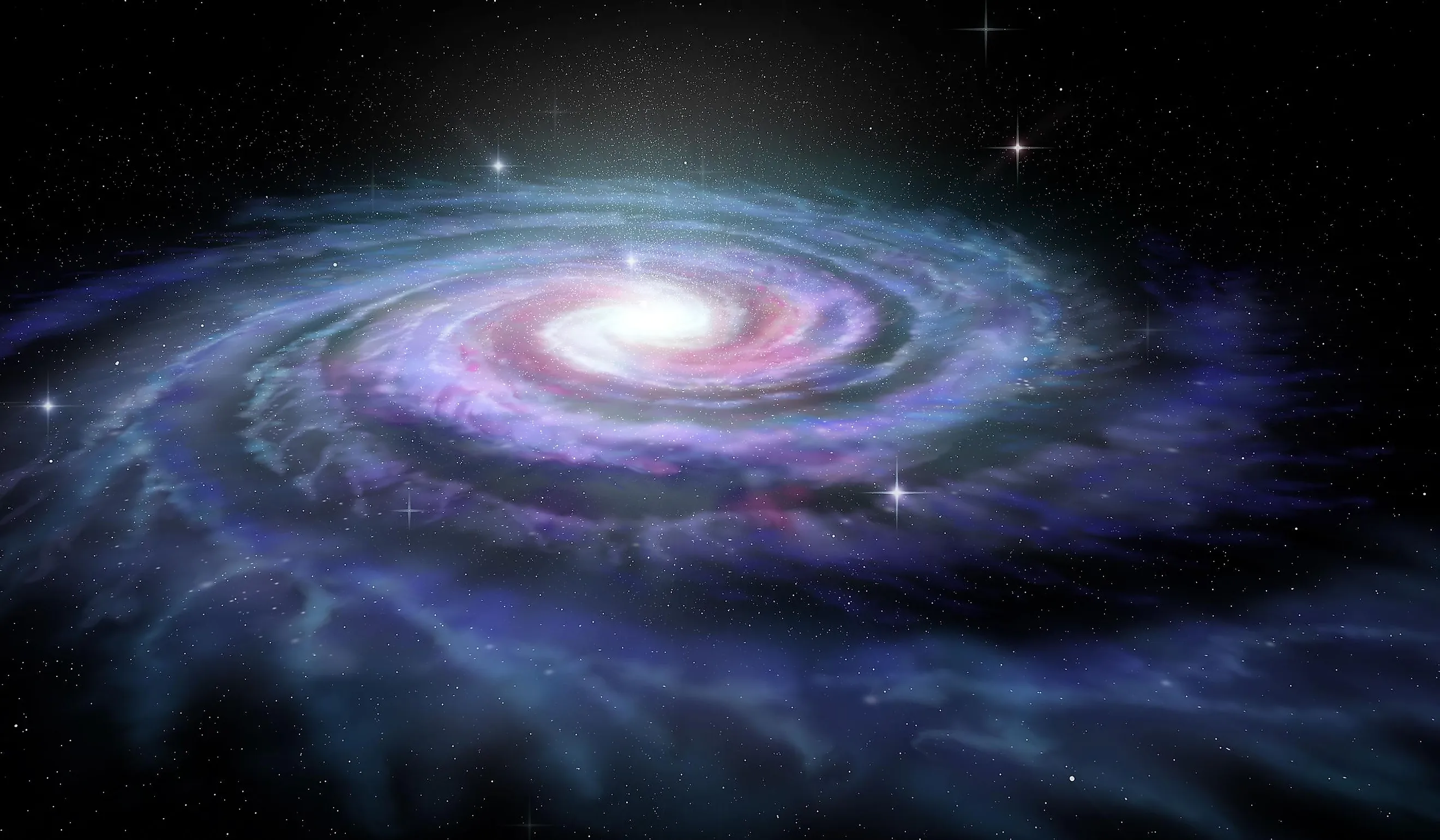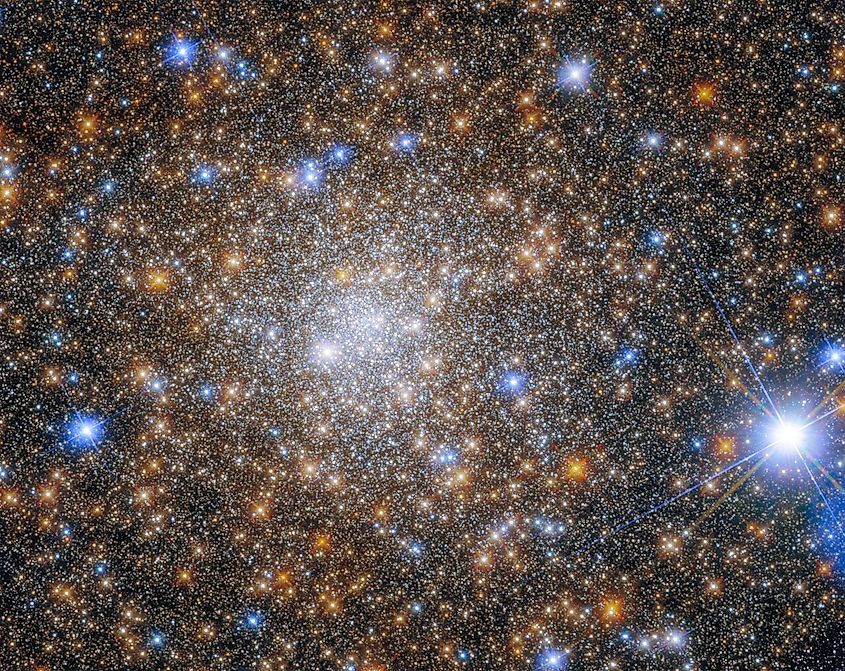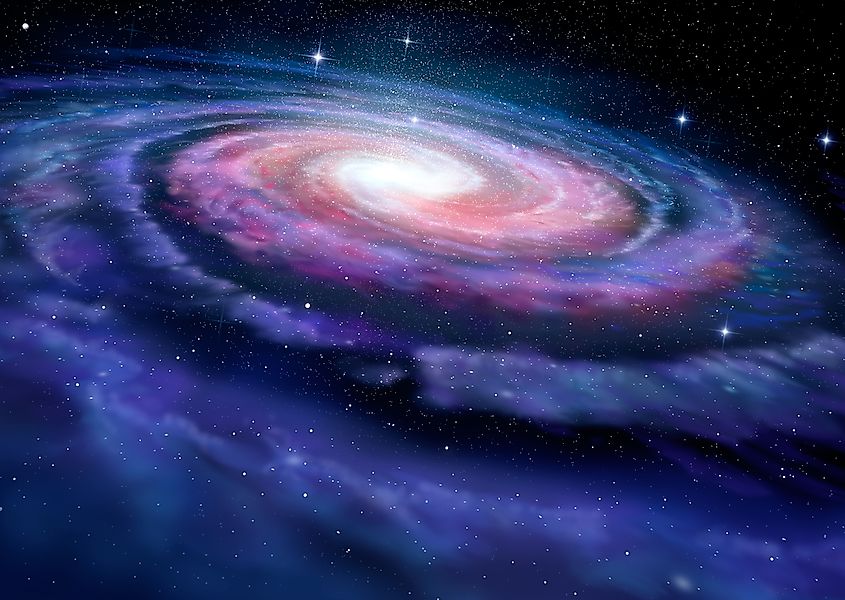
How Many Planets Are In The Milky Way?
The pale blue dot on which we reside is a humble speck within the vast Milky Way - never mind the entire universe! This barred spiral galaxy is a whopping 100,000 light-years across and 1,000 light-years thick. That's a lot of space to survey. Obviously, scientists are not able to physically count every single planet out there (in fact, thus far, only about 5,000 have been physically documented), but there are several sophisticated methods that help steer educated guesses (more on this in a moment).

A decade ago, NASA estimated that there were 100 billion stars in the Milky Way and that there was at least an average of one planet per star. However, further investigation has since suggested that there could be double the number of stars out there and, therefore, approximately twice the number of planets too. However, bearing in mind that our solar system (i.e., the only one we've thoroughly investigated) has eight planets, one would still be permitted to imagine a far greater number. So simply put, the Milky Way galaxy likely has between 100-200 billion planets, but there are perhaps many, many more.
What is a Planet?

The Backstory: It is difficult to say how many planets are in the Milky Way galaxy without a reliable definition of what a planet actually is. Our own solar system has produced a non-trivial margin of error since we began scanning it with the naked eye, and even after the advent of the telescope and other advanced technologies. Initially, the ancient Greeks, from whom we take the term planet (which means "wanderer"), initially counted the Sun, the Moon, Mercury, Venus, Mars, Jupiter, and Saturn (but interestingly, not Earth) as the official planets. Uranus was then discovered in 1781, and Neptune followed in 1846 (by which point the Earth, Moon, and Sun corrections had long since been made). Between those two discoveries, Ceres was spotted between Mars and Jupiter and was erroneously labeled as a planet. Pluto entered the picture in 1930 and has famously gone through an oscillating identity crisis (it is no longer considered a planet). And then, in 2005, astronomers announced that a tenth planet had been found in the Kuiper Belt (i.e., a band of countless icy bodies that constitute the perimeter of our solar system) - a declaration that has since been revoked.
Current Definition Of "Planet": Given the non-linear history of planet discovery, as well as the ever-growing gray areas of classification, the International Astronomical Union (IAU) has twice updated its definition of a planet this millennium. The most recent categories are as follows (taken from Resolution B5: Definition of a Planet in the Solar System):
- A planet is a celestial body that (a) is in orbit around the Sun, (b) has sufficient mass for its self-gravity to overcome rigid body forces so that it assumes a hydrostatic equilibrium (nearly round) shape, and (c) has cleared the neighborhood around its orbit.
- A 'dwarf planet' is a celestial body that (a) is in orbit around the Sun, (b) has sufficient mass for its self-gravity to overcome rigid body forces so that it assumes a hydrostatic equilibrium (nearly round) shape, (c) has not cleared the neighborhood around its orbit, and (d) is not a satellite.
- All other objects, except satellites, orbiting the Sun shall be referred to collectively as 'Small Solar System Bodies.'"
It should be noted that these criteria apply to our solar system (and they are far from unanimous in the world of astronomy). Conditions elsewhere in the Milky Way could certainly necessitate further elaboration. And even if these definitions stand the test of time, it is easy to see what a dizzying prospect it is to calculate planets that are millions of light years away (and obscured by all kinds of galactic material), when the celestial bodies in our own backyard (measured in astronomical units) have caused us such difficulty. But with that said, these projects are not hopeless guesswork. Every day, telescopes grow stronger, and satellites reach further into the cosmos, thereby giving astronomers new data from which to construct increasingly reliable models. This leads to our next important question:
How Do Astronomers Determine the Number of Planets In Our Galaxy?

According to NASA, there are five methods currently available to identify exoplanets (i.e., planets outside of our solar system). They are:
- The Transit Method
- The Radial Velocity Method
- Gravitational Microlensing
- Direct Imaging
- Astrometry
The most fruitful technique has been the Transit Method. Around 4,166 planets have thus far been discovered by observing a slight dim in a star's eminence when a planet passes between it and the observer (i.e. us or a telescope such as the Kepler or Gaia).
The Radial Velocity Method capitalizes on the slight wobble that orbiting planets cause their star (as observed by the change in light spectrum). 1,087 planets have been detected using this approach.
Gravitational Microlensing is a very Einsteinian phenomenon that has revealed 210 planets. As a distant planet passes between the Earth and the star in question, the light gets bent.
Direct Imaging is exactly what it sounds like, and has shown us 68 planets in the flesh.
And finally, Astrometry looks for nearly imperceptible movements of one star in relation to nearby stars, which correlates with the orbit of a planet. So far, only three discoveries have been logged using this method.
Age, History, And More About The Milky Way

As we learn more about what a planet is and how many of them are in our galaxy, our understanding of the Milky Way itself evolves at a commensurate, or even accelerated rate. Here's what we know (or strongly suspect) so far.
Just like the word planet, The Milky Way also owes its name to the Greeks. In their ancient mythology, the goddess Hera sprayed milk across the sky, resulting in the band that can be seen on cloudless nights and in the absence of light pollution. Other cultures have adopted different names, such as "Silver River" in China and "Backbone of Night" in South Africa, but in all cases, they are referring to one of the visible arms of our very own galaxy.
Our solar system occupies a tiny part of the Orion Spur (aka the Orion Arm) - a tangent between two of the Milky Way's main arms: Sagittarius and Perseus (there is also the Scutum-Centaurus and Local Arm). We are roughly 26,000 light years away from the central supermassive black hole, called Sagittarius A* (around which the entire galaxy revolves), and a similar distance from the Milky Way's outer edge. It takes between 230-250 million years for our Sun to complete one orbit around this core black hole. So, in all likelihood, humankind will never again see this part of space.
Another couple mind-blowing facts about the Milky Way are its age (estimated to be 13.6 billion years old), and its weight (calculated to be equivalent to 1.5 trillion solar masses). Approximating the mass of the galaxy also helps scientists to determine how much stuff (planets, stars, dark matter, etc.) it contains.
Final Thoughts
In the incomprehensible magnitude of space, all things are possible. The Milky Way galaxy possesses hundreds of billions of stars, with at least as many planets orbiting around them. Like our very own solar system, these spherical enigmas range from gas giants to earth-like bodies. Who knows what landscapes, lifeforms, and perhaps even civilizations are present amongst them? The average person may not have access to orbiting satellites or world-class observatories (though pictures from the former and trips to the latter are available), but the naked eye is enough to drop jaws and blow minds. The modern world may be plagued with light pollution, but there are Dark Sky Parks in the United States and other International Preserves throughout the world where the Milky Way can be seen in all its glory. When was the last time you had a good look at the stars?











